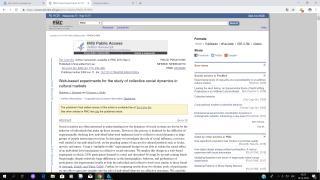Web-based experiments
-
2018-12-18 14:19:38
The Internet provides a new environment for developing a variety of applications for educational and research purposes. This paper presents the implementation of a web-based laboratory experiment on a coupled tank apparatus, a multi-input-multi-output (MIMO) system. The web-based laboratory has been developed to serve students and staff in the Department of Electrical Engineering at the National University of Singapore (NUS). The laboratory is an educational tool for teaching students the basic principles and methodology in performing a series of experiments on a coupled tank apparatus at any time and from any location through the Internet. With the capability to implement strategies for manual, proportional integral derivative (PID), general state-space, and fuzzy logic control, the laboratory also provides a platform for research staff to test control algorithms. Video conferencing has been used to provide audio and video feedback, with a camera mounted on a movable platform so that the user can control both the zooming and viewing angle.
-
2018-12-18 13:40:06
A laboratory information management system (LIMS), sometimes referred to as a laboratory information system (LIS) or laboratory management system (LMS), is a software-based solution with features that support a modern laboratory's operations. Key features include—but are not limited to—workflow and data tracking support, flexible architecture, and data exchange interfaces, which fully "support its use in regulated environments". The features and uses of a LIMS have evolved over the years from simple sample tracking to an enterprise resource planning tool that manages multiple aspects of laboratory informatics.
-
2018-12-18 13:23:20
Social scientists are often interested in understanding how the dynamics of social systems are driven by the behavior of individuals that make up those systems. However, this process is hindered by the difficulty of experimentally studying how individual behavioral tendencies lead to collective social dynamics in large groups of people interacting over time. In this paper we investigate the role of social influence, a process well studied at the individual level, on the puzzling nature of success for cultural products such as books, movies, and music. Using a “multiple-worlds” experimental design we are able to isolate the causal effect of an individual level mechanism on collective social outcomes. We employ this design in a web-based experiment in which 2,930 participants listened to, rated, and download 48 songs by up-and-coming bands. Surprisingly, despite relatively large differences in the demographics, behavior, and preferences of participants, the experimental results at both the individual and collective level were similar to those found in Salganik, Dodds, and Watts (2006). Further, by comparing results from two distinct pools of participants we are able to gain new insights into the role of individual behavior on collective outcomes. We conclude with a discussion of the strengths and weaknesses of web-based experiments to address questions of collective social dynamics.
-
2018-12-18 13:19:55
This article discusses methods and techniques, procedures and tools that have been found to be necessary or useful in Internet-based experimenting. While the focus is on experiments, many of the methods apply to other types of Internet-based research as well. The article is structured in a step-by-step fashion, guiding the reader through the various stages of setting up and conducting a web experiment. Apart from general issues, the relevant steps begin with planning, generating, and pre-testing an experiment. They continue with recruitment and monitoring, then analysis and archiving.
-
2018-12-18 13:02:23
Critically the base rate of high-connotation (Alexander, 5‘478; Kenneth, 2‘005; Charles, >16‘760) versus low-connotation names (Otis, 1‘296; Tyrone, 1‘324; Wilbur, 355) appears to be a confounding factor and may also explain findings in the original study, because less frequent names may cognitively be less associated with any personality characteristics.



